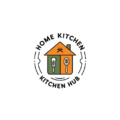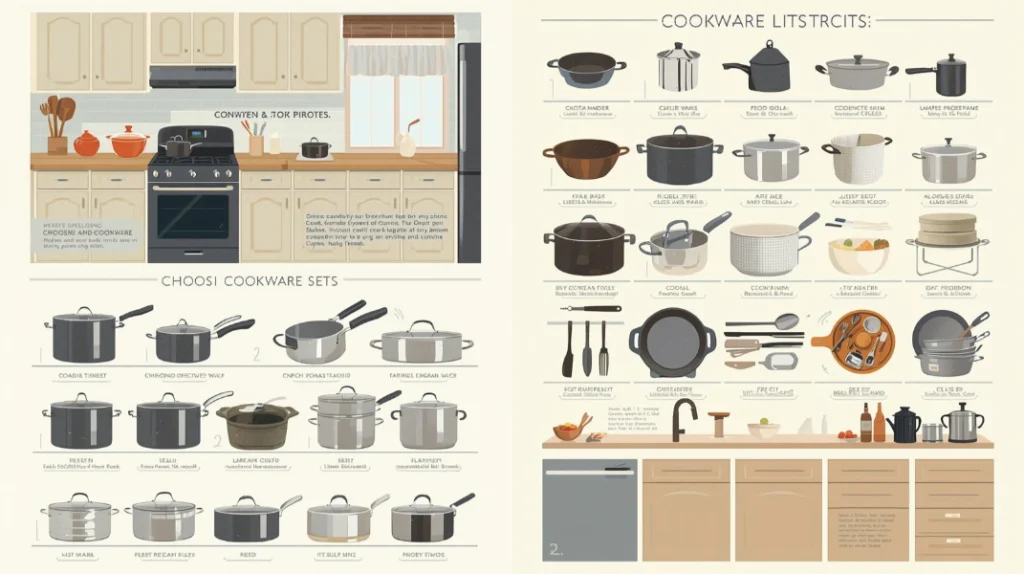Cookware is one of the most important investments for any kitchen. Selecting the right set can significantly impact your cooking performance and enjoyment. A high-quality cookware set not only makes cooking easier but also improves the taste and texture of food. It offers durability, better heat distribution, and even cooking. Plus, cooking with the right materials can be healthier and more efficient.
This guide is designed to help you understand the different factors to consider when choosing a cookware set. From types of materials to essential cookware pieces, we will cover all aspects to ensure you make the best decision for your cooking needs.
Understanding Your Cooking Needs
Before diving into the types of cookware materials and brands, it’s crucial to assess your cooking habits and needs. The right cookware for one person may not suit another, depending on their cooking style, frequency, and stovetop.
Cooking Style
Think about the types of dishes you prepare most often. Are you an expert at stir-fry, or do you love baking? Are soups, stews, or sauces a regular part of your meal plan? Some cookware materials are better suited for specific cooking methods, while others are more versatile.
- Stir-frying requires a wok or a deep, sloping pan.
- Baking needs sheet pans and baking dishes.
- Boiling and simmering benefit from stock pots and saucepans.
- Frying or searing requires a heavy skillet or frying pan.
Cooking Surface
Different cooking surfaces—such as gas, electric, induction, or ceramic—may require specific cookware materials. For example, induction cooking works best with cookware that has a magnetic base, such as stainless steel or cast iron. Gas and electric stoves offer more flexibility with cookware material, while ceramic stoves typically require flat-bottomed pans for better heat contact.
Frequency of Use
Are you cooking every day, or do you only cook on weekends? Daily cooking may require more durable cookware that can withstand frequent use. If you’re a weekend chef, you may not need as high-end materials or as large a set.
Types of Cookware Materials
Cookware comes in a variety of materials, each with its own benefits and drawbacks. Choosing the right material depends on your cooking style, budget, and maintenance preferences.
Stainless Steel
- Pros: Stainless steel is highly durable, non-reactive (won’t alter the taste of your food), and easy to clean. It’s often considered the best material for professional-grade cookware due to its strength.
- Cons: Pure stainless steel doesn’t distribute heat well, which is why it’s often combined with other metals like aluminum or copper to improve conductivity. It can also be on the pricier side.
Cast Iron
- Pros: Known for excellent heat retention, cast iron is perfect for slow cooking, frying, and searing. When seasoned properly, it forms a natural non-stick surface.
- Cons: Cast iron is heavy and requires proper maintenance. If not seasoned well, it can rust. It also requires special cleaning, as soap should be avoided.
Non-Stick
- Pros: Non-stick cookware makes it easy to cook with less oil or fat, and cleaning is a breeze. It’s great for low-fat cooking and delicate foods like eggs and fish.
- Cons: Over time, the coating may wear off, and some non-stick materials, especially older Teflon coatings, can pose health risks when overheated. Look for PFOA-free options for a safer experience.
Copper
- Pros: Copper is the best conductor of heat, meaning your cookware heats up and cools down quickly, offering more control over cooking temperatures.
- Cons: It’s expensive, requires frequent polishing, and can react with acidic foods. Copper cookware often has an additional layer, such as stainless steel, to prevent direct contact with food.
Aluminum
- Pros: Aluminum is lightweight, affordable, and conducts heat quickly. It’s often used in budget-friendly cookware.
- Cons: Aluminum is prone to scratching and denting, and it reacts with acidic foods. To avoid these issues, look for anodized aluminum, which is more durable and non-reactive.
Ceramic
- Pros: Ceramic cookware is non-toxic and non-stick, making it a great choice for health-conscious cooks. It also retains heat well and is easy to clean.
- Cons: It’s not as durable as other materials and can break easily. While it’s ideal for low-fat cooking, it may not withstand high heat over time.
Carbon Steel
- Pros: Similar to cast iron but lighter, carbon steel is durable, offers excellent heat retention, and forms a natural non-stick surface when seasoned.
- Cons: Like cast iron, it requires maintenance to prevent rusting and needs regular seasoning.
Essential Cookware Pieces for Every Kitchen
While cookware sets vary in size, certain pieces are essential for any kitchen. Here’s a list of the most important cookware items to consider when building your collection:
- Skillets and Fry Pans: Perfect for frying, sautéing, and searing. Available in many materials, such as non-stick and cast iron.
- Sauce Pans: These are versatile and come in various sizes. They are great for simmering sauces, boiling water, or preparing small portions.
- Stock Pots and Dutch Ovens: Stock pots are large enough for soups, stews, and stocks, while Dutch ovens are perfect for slow-cooking and roasting.
- Sauté Pans: These have higher sides than fry pans and are great for cooking foods with sauces or liquids.
- Grill Pans: Indoor grilling is made easier with grill pans that allow you to get the same seared texture as outdoor grilling.
- Baking Sheets and Roasting Pans: Essential for baking, roasting vegetables, or making casseroles.
Important Factors to Consider When Choosing a Cookware Set
When purchasing a cookware set, there are several factors to consider to ensure you get the best value for your money.
Price Range
Cookware sets come in a wide range of prices. Budget-friendly sets may lack the durability or performance of premium sets, but they still work well for occasional cooks. On the other hand, premium cookware may be more expensive but is built to last, often made from high-quality materials with great heat conductivity.
Brand Reputation
Trusted brands often offer quality assurance, warranties, and good customer service. Look for well-known names in the industry that are known for producing long-lasting, high-performance cookware.
Durability and Longevity
Your cookware should last for years. Consider materials that are known for durability, such as stainless steel, cast iron, or anodized aluminum. Additionally, check if the cookware set has a warranty to ensure it’s protected against defects.
Ease of Maintenance
Some cookware requires special care. Non-stick pans, for example, should be washed gently to prevent damage to the coating, while cast iron needs seasoning. Check whether the cookware is dishwasher safe for added convenience.
Heat Distribution and Compatibility
Quality cookware should heat evenly, preventing hot spots that can burn your food. If you have an induction stove, make sure the cookware is compatible, as it requires magnetic-based materials like cast iron or stainless steel.
Handles and Lids
Ergonomic, heat-resistant handles are a must for comfort and safety. Glass lids are great for monitoring food while it’s cooking and help trap heat and moisture.
Cookware Sets vs. Individual Pieces
You can either buy a full cookware set or purchase individual pieces.
Cookware Sets
Cookware sets are convenient because they come with a variety of essential items, offering good value for money. They’re ideal for new cooks who need a complete set of tools. However, you may end up with items you don’t need.
Individual Pieces
If you have specific needs or want to customize your collection, individual pieces may be the best choice. You can select exactly what you need and avoid buying unnecessary items.
6. Health Considerations
Certain cookware materials are healthier than others, especially when considering non-stick coatings.
- Non-stick coatings can pose health risks if overheated. Look for PTFE and PFOA-free options for safer cooking.
- Cast iron and stainless steel are generally safe and durable.
- Ceramic cookware is a non-toxic alternative to traditional non-stick pans.
Eco-Friendly Cookware
If you’re environmentally conscious, look for cookware made from sustainable materials. Brands that focus on eco-friendly manufacturing processes are becoming more popular.
- Materials to look for: Recyclable metals, non-toxic coatings, and sustainable manufacturing.
- Eco-conscious brands: Many cookware companies are committed to reducing their environmental impact through ethical sourcing and eco-friendly designs.
Best Cookware Sets for Different Budgets
Cookware sets are available at various price points:
- Budget-Friendly: Affordable sets offer solid quality but may lack some advanced features. Brands like T-fal or Cuisinart are great options for those on a budget.
- Mid-Range: Brands like All-Clad and Calphalon offer durable, versatile sets with better heat distribution and quality materials.
- Premium: High-end cookware like Le Creuset and Staub are known for their performance, luxury design, and durability.
How to Maintain Your Cookware for Longevity
Proper maintenance extends the life of your cookware. Here are some tips for keeping your pots and pans in good condition:
- Cleaning: Follow specific cleaning instructions for each material. Use non-abrasive scrubbers to avoid damaging the surface.
- Cast Iron: Season regularly with vegetable oil to prevent rust.
- Non-stick: Avoid using metal utensils, and opt for silicone or wooden spoons.
- Storage: Store cookware in a dry place to prevent moisture buildup, which can lead to rust or corrosion.
Conclusion
Choosing the right cookware set is an investment in your cooking future. By understanding your cooking needs, the different cookware materials, and how to maintain your set, you can make an informed decision. Whether you’re looking for a complete set or individual pieces, selecting quality cookware tailored to your cooking style will make your meals tastier and your cooking experience more enjoyable.
FAQs:
How to choose a cookware set?
When choosing a cookware set, consider factors like your cooking style, budget, and the materials that best suit your needs. Think about the types of dishes you cook most often and whether the set includes versatile pieces like skillets, saucepans, and stockpots. Pay attention to the material (stainless steel, cast iron, non-stick, etc.), heat conductivity, durability, and maintenance requirements. Also, ensure the set includes the right pieces for your kitchen and is compatible with your stovetop.
What is the #1 rated cookware?
The #1 rated cookware often varies depending on specific needs, but All-Clad is widely regarded as one of the top choices for professional-quality cookware. Known for its durability, superior heat distribution, and long-lasting performance, All-Clad offers a range of cookware, including stainless steel and non-stick options. Other highly rated brands include Le Creuset for enameled cast iron and Calphalon for non-stick cookware.
What pans to stay away from?
You may want to avoid cheap non-stick pans that contain harmful chemicals like PFOA or PTFE, as these can break down over time and pose health risks, especially at high temperatures. Also, thin aluminum pans without a non-stick coating can warp easily and may not provide even heat distribution. Additionally, cheap copper cookware without a protective lining can react with acidic foods and alter the taste of your dishes. Always opt for quality materials that align with your cooking needs.
What are the only three pans you need?
While cookware needs can vary, most home cooks will find that having these three pans covers the essentials:
- A skillet (or frying pan) – Ideal for sautéing, frying, and searing.
- A saucepan – Perfect for simmering sauces, cooking grains, and boiling liquids.
- A stockpot (or Dutch oven) – Essential for soups, stews, boiling pasta, or slow cooking. These three versatile pans are all you need for most cooking tasks.

